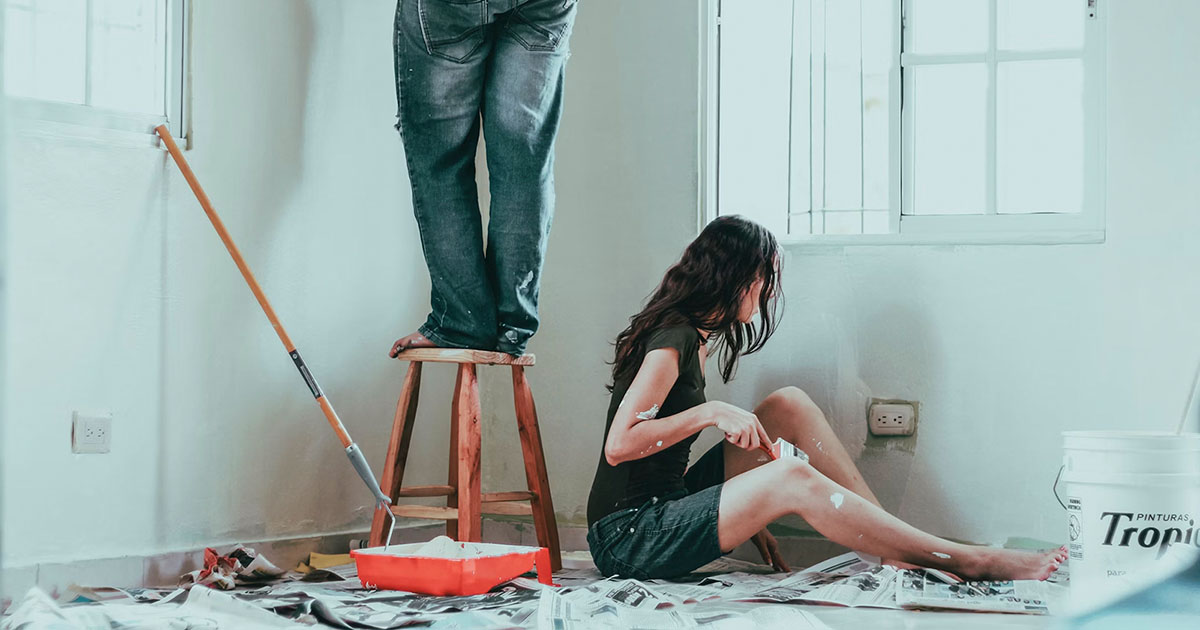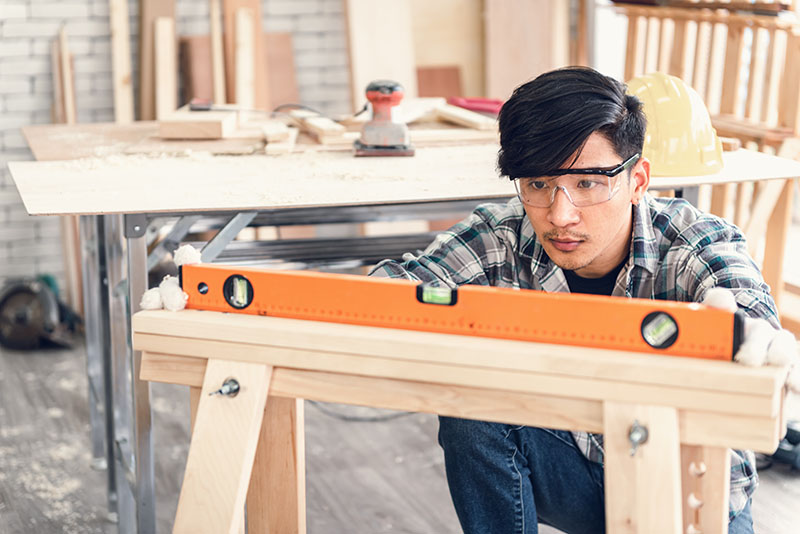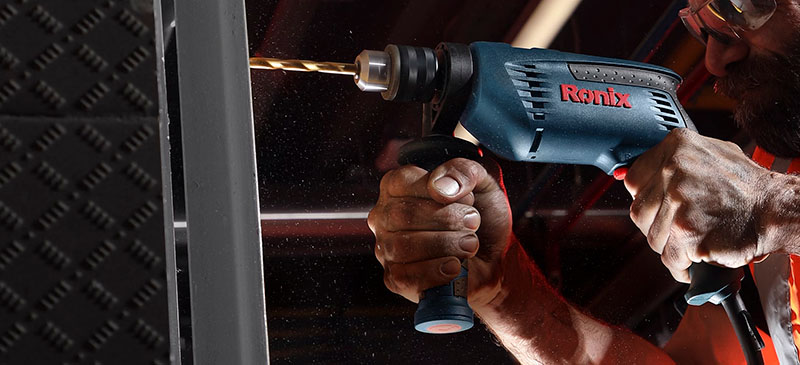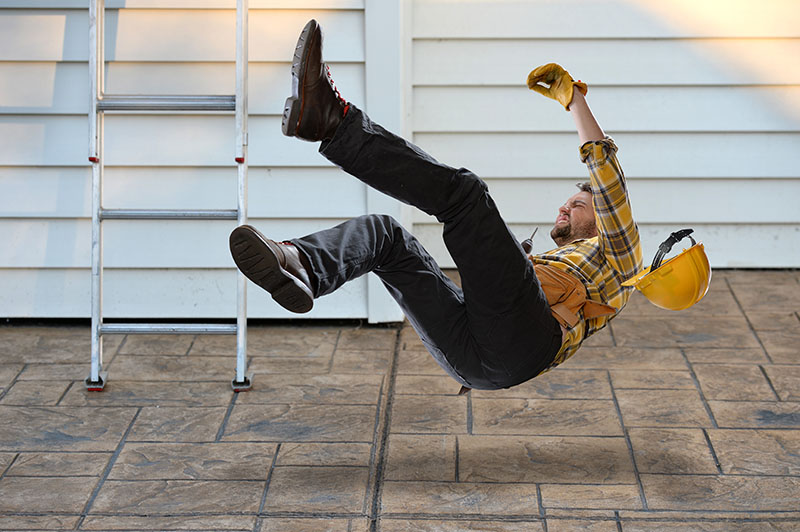10 DIY Health and Safety Tips

Home DIY projects can be fun, and it can also help you to save a lot of money on contractors - but only if you’re doing it safely! Mistakes can cost you an arm and a leg - literally!
To save yourself a hospital trip, it’s important to put safety first. Whether you’re building a shed, clearing your drains or regrouting a shower, go into it like you’re paying insurance on yourself - stay safe to avoid a premium!
General Safety Tips for DIY Projects

1. Wear the Right Clothing
Remove watches and jewellery and avoid wearing loose clothing. All of them can get caught by tools or objects causing you to trip, fall or drop what you are holding. You don’t want to be tripping over your feet while handling a chainsaw as an example.
Keep things short and tidy: wear cuffed trousers or tuck your trousers into your socks, tuck your sleeves under your gloves, and zip up your jacket.
PPE is also important! Invest in items you need dependiong on the kind of work you are carrying out such as:
- A hard hat
- Safety gloves
- Safety goggles
- Steel toe-capped boots
- Or hearing protection.
It can be a bit pricey, but once you have them, they’re yours forever - and they can save you from a world of hurt or long-lasting damage!
2. Keep a Tidy workspace
It can be tempting to let all of your materials pile up around you, but it’s not safe to be working in a messy environment. Clean and tidy before you start, making sure there are no tripping hazards around your feet or falling hazards stacked up around you.
Give yourself room to move and a clear route to leave the room quickly in case of an emergency. If you’re working with chemicals, make sure that you can open the windows and keep air flowing through the room.
3. Stay Aware of Your Surroundings
When you’re having fun with a project, it can be tempting to zone out. If you’re using power tools and ladders, however, you must stay aware of your surroundings. Dogs, cats, and children can all become hazards very quickly, even if you followed the previous steps to a T!
Make efforts to keep animals and other people out of your workspace. If that’s impossible, enlist help to keep an eye on the surrounding area - especially if you’re up a ladder.
4. Keep a First Aid Kit
The fourth (but not final) tip is to keep a first aid kit on hand. A first aid kit can help you to manage smaller injuries and keep larger injuries controlled before you can get yourself to the hospital. It sounds grim, but it’s better to be safe than sorry! Conduct a risk assessment of your project, and stock your first aid kit accordingly. Make sure to regularly check it in case your items go out of date.
Power Tool Safety Precautions

5. Inspect Your Tools
You should always check them for damage. Look for frayed power cords, dents, and loose connections between components. Malfunctioning tools can be incredibly dangerous, so this step is an important one!
Understanding a tool before use is important, especially if it has dangerous moving parts. If you hire tools, always ask for a demonstration and check for their most recent service tag before you take them home. The company should give you a full instruction manual along with your hire, and it’s important to read this in full.
6. Never Leave Tools Unattended
Unplug your power tools whenever you leave them alone. The last thing you want is a live tool that you don’t have control over! When you aren’t using your tools, store them safely out of the reach of children and pets. Secure them and make sure that they can’t accidentally get knocked off surfaces or hooks on the wall.
7. Protect the Power Cord
The power cord is an incredibly important part of your tools, and it can also be the most hazardous. Always keep the cord away from the tool itself, and make sure that you’re aware of where it is at all times.
Never carry the tool by the cord, and always check that the tool itself is off before you plug it in. Check your power cords regularly for fraying and damage, as this poses an electrical hazard.
Ladder Safety Tips

8. Put The Ladder Up Correctly
When putting up a ladder, you should always follow the manufacturer’s instructions. The ‘one out, four up’ rule is a good place to start - for every measure out from the wall, you should match it with four measures up the wall for the best ladder angle (75° angle).
You should also make sure to use non-slip covers or set up your ladder on firm ground. If you’re ever unsure, refer to the manual or ask for a second opinion about your setup - preferably before you climb!
9. Take it Slow
Never rush when using a ladder. It can be tempting to hurry up and down to get a job done quickly or relieve yourself of the pressure of heights but moving too fast can cause a ladder to slip, shake or topple. Don’t reach, lean, or rush - your safety is more important than speed.
10. Never Work Alone
When doing ladder work, you should never be alone. Ask someone to stand at the bottom of the ladder and keep an eye on both you and the surroundings. If you’re working on a pavement, they can also help to ensure people or animals do not venture into your workspace.
A ladder can be incredibly dangerous if managed incorrectly, so it’s important to get it right. If you’re ever unsure about your setup, or if you’re concerned about additional hazards, ask for a second opinion or get a professional in. Trust your instincts!
If you need a hand clearing out the rubbish left over from your DIY projects, check out our man and van rubbish removal services for rubbish removed by our expert teams, or order a HIPPOBAG and we’ll collect it when you have finished filling it.

